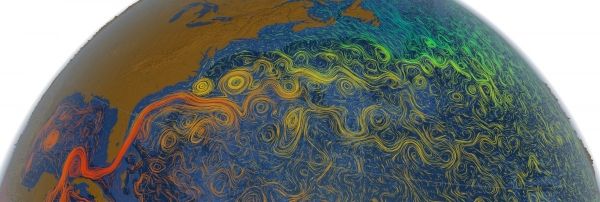Woods Hole Oceanographic Institution (WHOI) senior scientist of physical oceanography, Dr. Young-Oh Kwon, and WHOI adjunct scientist, Dr. Claude Frankignoul, have received a new research grant from the National Oceanic and Atmospheric Administration (NOAA) Modeling, Analysis, Predictions and Projections (MAPP) Program, funding their research project focusing on western boundary ocean currents and their correspondence with the atmosphere in relation to modern day climate.
Western boundary currents (WBCs), such as the Kuroshio-Oyashio Extension in the North Pacific Ocean and the Gulf Stream in the North Atlantic Ocean, are the regions of largest ocean variability and intense air-sea interaction. This WBC variability generates strong ocean-to-atmosphere heat transfer, resulting in warming that can impact large-scale atmospheric circulation and heat transport toward the poles in both the ocean and atmosphere.
The project suggests that this WBC behavior and its associated air-sea interaction play fundamental roles in regulating our climate, as well as have a significant impact on extreme weather, coastal ecosystem, and sea-level. However, their representation in climate models needs to be improved. This study looks to investigate the nature and impacts of the WBC variability in state-of-the-art climate models based on a set of model diagnostics. Kwon and his team will develop the diagnostics for this study based on various observational datasets. Then, they will be used to determine the differences between observations and the climate model simulations (or model biases) at standard and higher resolutions.
Read more at: Woods Hole Oceanographic Institute
Swirling parcels of water, called ocean eddies, spin off from the warm Gulf Stream, the powerful northward-flowing current that hugs the U.S. East Coast before veering east across the Atlantic Ocean. This visualization was generated by a numerical model that simulates ocean circulation. WHOI researchers are studying western boundary ocean currents, like the Gulf Stream, and how their behavior can be associated with climate. (Photo Credit: NASA/Goddard Space Flight Center Scientific Visualization © NASA, Goddard Space Flight Center)


